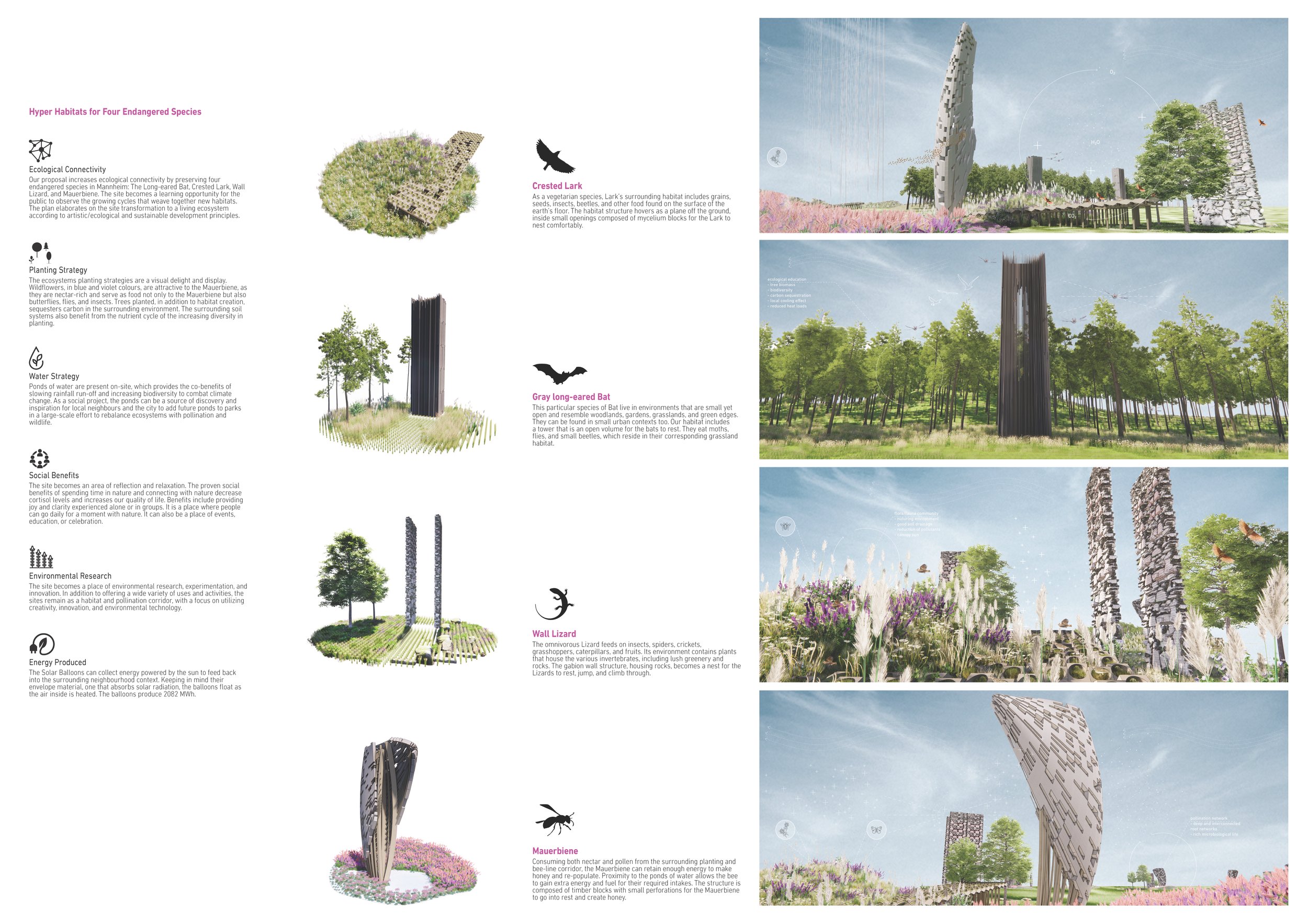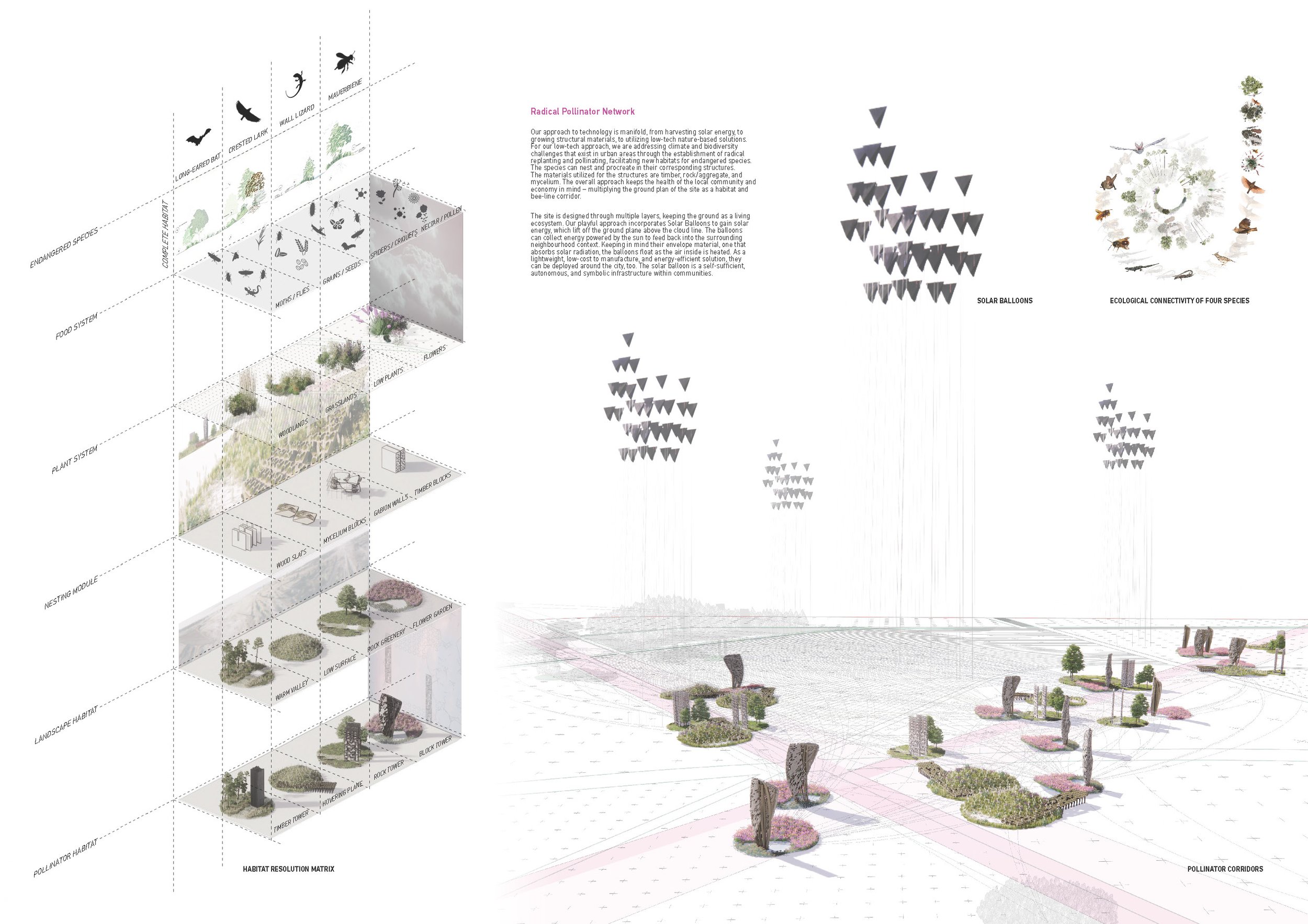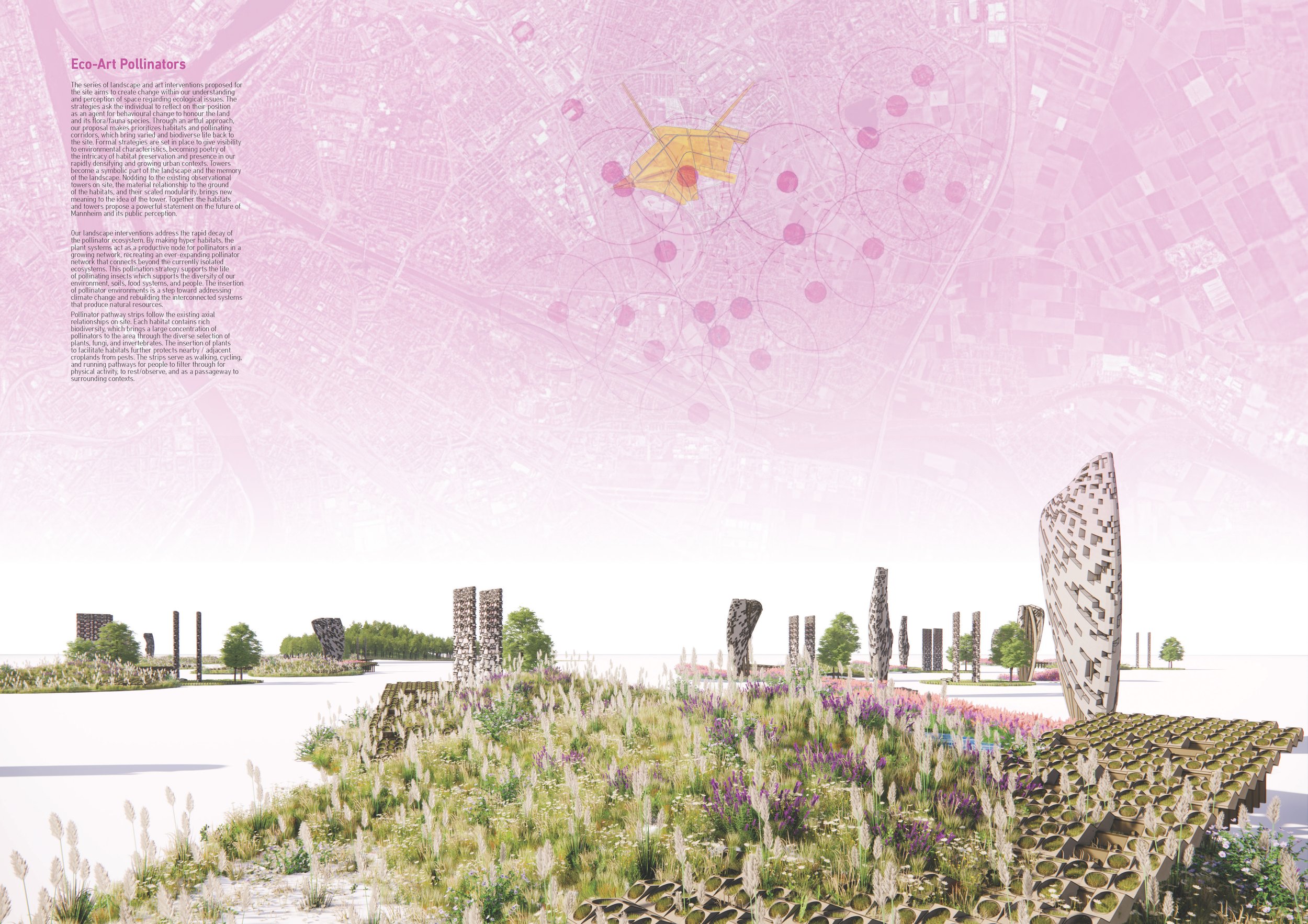LAND ART GENERATOR INITIATIVE DESIGN COMPETITION MANNHEIM FLDWRK NEW APERTURES 2022
HYPER HABITATS FOR FOUR ENDANGERED SPECIES crested lark, grey long-eared bat, wall lizard, mauerbiene
RADICAL POLLINATOR NETWORK Our approach to technology is manifold from harvesting solar energy to growing structural materials to utilizing low-tech nature-based solutions. For our low-tech approach, we are addressing climate and biodiversity challenges that exist in urban areas through the establishment of radical replanting and pollinating, facilitating new habits for endangered species. The species can nest and procreate in their corresponding structures. The materials utilized for the structures are timber rock/aggregate, and mycelium. The overall approach keeps the health of the local community and econom in mind - multiplying the ground plan of the site as a habitat and bee-line corridor.
The site is designed through multiple layers, keeping the ground as a living ecosystem. Our playful approach incorporates Solar Balloons to gain solar energy, which lift off the ground plane above cloud line. The balloons can collect energy powered by the sun to feed back into the surrounding neighborhood context. Keeping in mind their envelope material, one that absorbs solar radiation, the ballons float as the air inside is heated. As a lightweight, low-cost to manufacture and energy-efficient solution, they can be deployed around the city, too. The solar balloon is a self-sufficient, autonomous, and symbolic infrastructure within communities.
ECO-ARTS POLLINATOR The series of landscape and art interventions proposed for the site aims to create change within our understanding and perception of space regarding ecological issues. The strategies ask the individual to reflect on their position as an agent for behavioral change to honor the land and its flora/fauna species. Through an artful approach, our proposal prioritizes habitats and pollinating corridors, which brings varied and biodiverse life back to the site. Formal strategies are set in place to give visibility to environmental characteristics, becoming poetry of the intricacy of habitat preservation and presence in our rapidly densifying and growing urban contexts. Towers become a symbolic part of the landscape and the memory of the landscape. Nodding to the existing observational towers on site, the material relationship to the ground of the habitats and their scaled modularity brings new meaning to the idea of the tower. Together the habitats and towers propose a powerful statement on the future of the Mannheim and its public perception.



